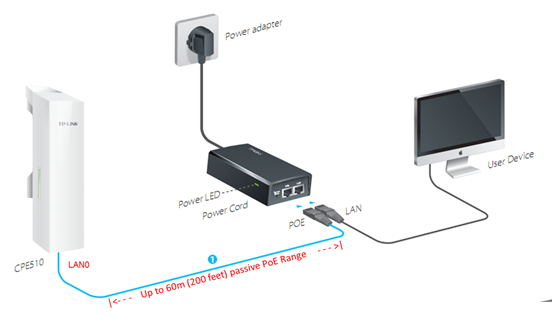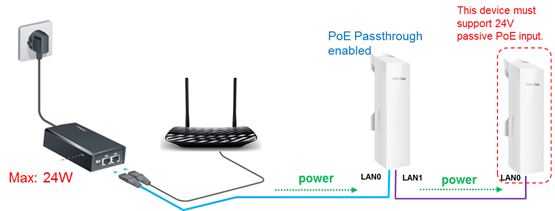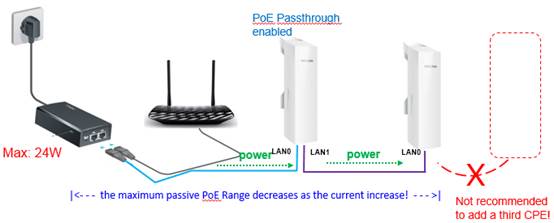How to use the Passive POE Passthrough function on the Pharos-Series products?
Typical Scenario without Passive PoE Passthrough
The power supply method of Pharos series product is called passive PoE. The following figure shows the typical hardware connection scenario of a Pharos CPE, where we use one PoE adapter to power only one CPE.

Typical Scenario with Passive PoE Passthrough
Now imaging you are hanging two Pharos CPE on the roof, normally you need two PoE adapter and two power sockets. It won’t be a problem when you do find two power sockets around. But what if there is only one power socket? This is where Passive PoE Passthrough becomes handy.
Pharos devices supports a function called Passive PoE Passthrough. When it is enabled, port LAN1 can also provider power over Ethernet cable to power another passive PoE device, such as another Pharos CPE/BS.

Note: PoE Passthrough is disabled by default, please log in web UI and go to the Management menu to enable it.
Cautions:
1. The input voltage of the powered device must be 24V.
2. Do NOT attempt to connect any non-passive PoE devices to port LAN1 when PoE passthrough is enabled. Otherwise the powered device could be damaged.
3. Enable PoE Passthrough first and only then connect the powered device to port LAN1. Otherwise the initial voltage may damage the powered device.
Can I daisy chain devices indefinitely by using Passive PoE Passthrough?
The simple answer is no.
Take CPE510 as an example. Its maximum power consumption is 13W. The maximum power output of the PoE adapter is 24 Watts. So every adapter should supply no more than 2 CPEs.
Furthermore, adding more CPEs to the same PoE adapter will increase the current on the cable. As the current increases, the voltage loss on the cable grows. Eventually, the maximum passive PoE range decreases.

This Article Applies to:
Is this faq useful?
Your feedback helps improve this site.
Your feedback helps improve this site.
User Application Requirement | Updated 07-30-2015 09:14:43 AM